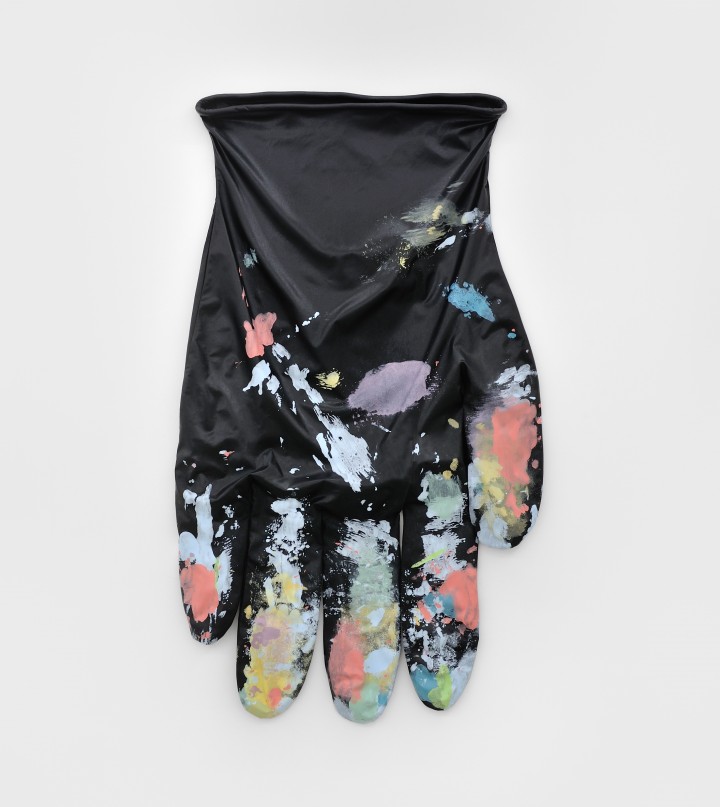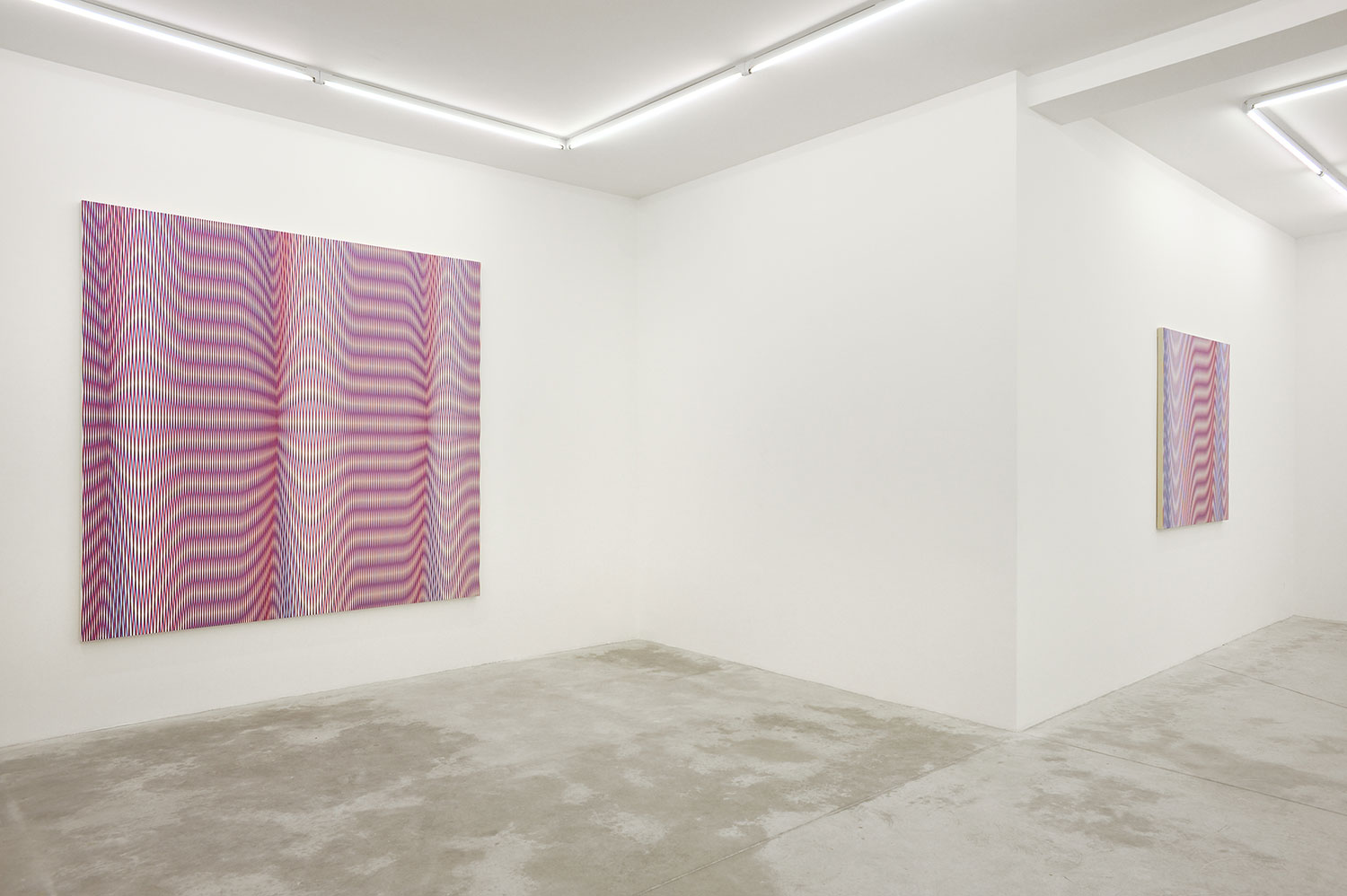For her first solo show at Praz-Delavallade Gallery in Paris, Amanda Ross-Ho has gathered a selection of fifteen new works: sculptures, wall-pieces, textiles and site-specific gestures. The entire show hinges on the idea of visualizing space and the sensation of negotiating our location within it. The formal interplay between tools used in the artist’s studio and the gallery — gloves, palettes, patterns, rags, a small black paint pot, an eraser shield, a setsquare — signify the potential for art making in an exhibition setting. These basic objects and the ecology of the exhibition space are the cornerstones of her practice.
In “How to Remove Dark Spots” she explores her ongoing interest in this reflexive interplay between production and exhibition. Four cut-vinyl wall works are large-scale replicas of scribbles that can be found in WORLD MAP (2015), a found world map heavily inscribed with drawings, notes, calculations as well as the residue of personal activity (wine and coffee stains). This gesture connects the gallery walls with the space located in five scale models, and meets the terms of scale established by large-scale translations of paint-smeared black rubber gloves (Black Glove Right #1 and Black Glove Left #1, 2015), an eraser shield (Eraser Shield, 2015), a white cotton glove (White Glove, 2015) and a large hair scrunchie (Black Scrunchie (1258%), 2015).
In this way Amanda Ross-Ho has been gathering specific “gestures” over the years — such as hanging work gloves — and referring to them as “choreographed objects.” Here, the two large-scale gloves seem to embody the materiality of disappearance; and all the residue of the hand at work is made explicit. They act as both index and metaphor for all the gestures made in the studio and during the exhibition setting. Their shifting scale is an analog for close focus within her visual vocabulary. As she says, “Having an object reside within the same scale as your body is not dissimilar to pressing your eye-ball up against it and absorbing every detail.”


